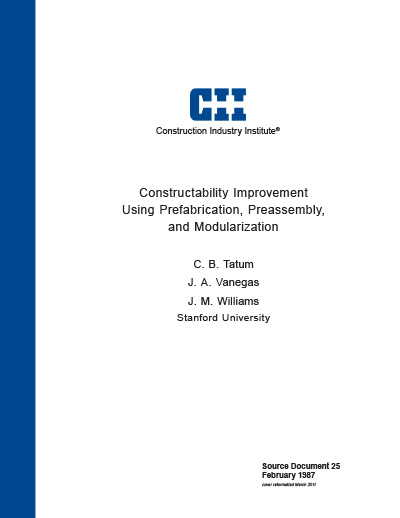
Constructability Improvement Using Prefabrication, Preassembly, and Modularization
How can owners seeking greater construction cost effectiveness and contractors seeking competitive advantages benefit from prefabrication, preassembly, and modularization? Properly used, these methods offer a substantial opportunity for improved project performance. They can help overcome the obstacles of an adverse site, meet a demanding schedule, comply with unusual design criteria, allow use of specialized technology, and realize the advantages of manufacturing conditions. These are each significant project benefits. In fact, these methods may allow proceeding with a project which is not feasible using conventional construction techniques.
But prefabrication, preassembly, and modularization (termed special construction methods in this report) bring about many changes on projects and place new demands on management. For example, these methods can alter the project organization, change planning and monitoring, require greater coordination, and alter project results. They can also add new activities and change conventional operations. Thus the gains are not won without new demands. However, if managers anticipate and prepare for the implications, the potential benefits are substantial.



